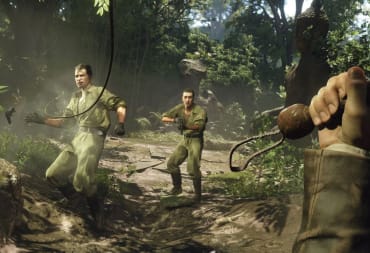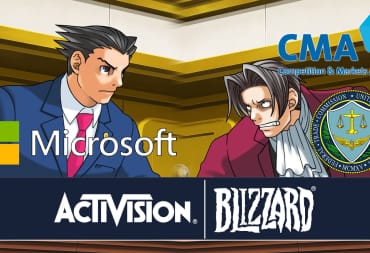When it comes to first-person shooters, one game that is one of the most important games in the conversation of the best of all time is the Nintendo 64 classic, GoldenEye 007. A rare example of a movie-based game that works, GoldenEye was part FPS, part multiplayer mayhem, and set the precedent for an entire generation of FPS titles. Make no mistake, GoldenEye is worthy of its ranking as one of the greatest games of all time, and that is mostly due to the contributions it brought to the FPS genre.
What do I mean exactly? Well, consider the following: before GoldenEye, how many FPS titles had specific mission structures and stealth-based gameplay? The standard at the time for first-person shooters was the frantic, fast-paced Doom-esque clones we tended to see, where the objective is to stick and move, strafe and shoot. Shadow Warrior, Quake, and Duke Nukem were the kings of the mountain, and the holy mantra of their design was go hard and go fast. Otherwise, the only way to make a FPS title was an arcade-style rail shooter, like Virtua Cop and Lethal Enforcers, just as fast, but just as fixed.
There was no middle ground in the late 1990s, it was either maze-like or on-rails, but it was always fast paced and without subtlety. GoldenEye, in contrast, was an anomaly among FPS titles in 1997. Released exclusively for consoles and developed by Rare, the game had an inexperienced team (eight out of ten developers have never made a game before) that was originally going to create a rail-shooter, before the idea was scrapped completely. One of the reasons for this was the attempt to create open and interesting levels for the game. The team followed the GoldenEye movie closely for reference, and even expanded on events in the movie to give the player more content to follow as well. This began expanding the level design to the point of turning many of the games eighteen levels into non-linear arenas.
Some credit should still be given to Virtua Cop, however, as it influenced parts of Goldeneye’s design, including innocent civilians, gun reloading, and hit-detection on enemy body parts to simulate being shot in certain limbs. The changes gave GoldenEye a bit of “realism” to its design, which slowly became one of the mandates of the development team. Ultimately, it was decided that a rail-shooter wouldn’t be made, but instead a stealth-based FPS with a mission structure, to better simulate the events of the movie.
To incorporate these new stealth mechanics, the game had all of its guns use an invisible radius, that developer David Doak explains: “If you fired the same gun again within a certain amount of time, it did a larger radius test and I think there was a third even larger radius after that. It meant if you found one guy and shot him in the head and then didn't fire again, the timer would reset." Other tricks that transformed the game were simple implementations like the use of windows; the player can see behind them, but enemies could not, which was designed to encourage players to spy on their enemies. The use of the game missions' structure was also important to the stealth based design, giving players a tangible reward for playing the game with stealth in mind.
The relative inexperience of the team, combined with the very organic design process that would last over two years of development, would ultimately be an asset to Rare. Rare experimented with a lot of ideas, many of which would be rejected by Nintendo over time. One notable example involved removing and reinserting the Rumble Pack to reload your guns, which proved to be too impractical, but it showed how the team was thinking outside the box on the game. It should be noted that GoldeEeye was released in 1997—two years after the movie was released—which was also considered unusual due to it being a movie-tie in. The heads of Rare, the famous Stamper brothers, gave the dev team as much time as possible for the game, pushing back its released by a full year to work out as many bugs in the design as possible.
The gamble paid off, as GoldenEye would become a major success for the Nintendo 64, becoming the best selling Nintendo 64 game in North America by 2004. It was among the first console exclusive FPS titles, at a time where first-person shooters were often ported to consoles from arcades or the PC, and it was among the slowest in terms of pacing. The mission structure, stealth mechanics, and in general calmer gameplay rhythm was a stark contrast to the market in 1997. In 2016, GoldenEye would be considered the norm versus the exception; almost every FPS today not only has a mission structure framework, but plays slower and more deliberate compared to the breakneck speeds that were once the norm.

One other major aspect of its design was the inclusion of multiplayer. The idea behind multiplayer on the console was more or less an afterthought by the dev team. In fact, only one person on the dev team, Steve Ellis, worked on the entire mode. According to Doak, Ellis “sat in a room with all the code written for a single-player game and turned GoldenEye into a multiplayer game.” The multiplayer component became an instant success, despite its rather primitive design of four player split-screen. It would soon serve as the benchmark for multiplayer design for the next two console generations, before connectivity between consoles and PC began to blur and multiplayer modes began to hold more than four – eight players.
While the market for a more old-school style of FPS is still there, as 2016’s release of Doom has showcased, GoldenEye 007 as a piece of software is very important to the further development of the genre on the whole. The changes to the FPS design would have wide-reaching consequences, leading to the spiritual successor series, Perfect Dark by Rare, but eventually the viability of console FPS titles would hit another benchmark in 2001 with Halo: Combat Evolved. Halo takes most of the credit for popularizing FPS titles on the console market, but it is GoldenEye that set the blueprint for the rhythm and design of those games—a blueprint that is still used as the standard today.
If nothing else, GoldenEye’s legacy is one that is intact: a landmark FPS for console players and a game in many ways ahead of its time. Unique, perfectly paced, and most importantly fun, GoldenEye is a must play for FPS fans out there, and rightfully deserves the distinction of being among the best games ever made.
Hope you guys enjoyed this article. Be sure to check out the other articles in the series this week, and if you have any questions or comments please leave them below.
Have a tip, or want to point out something we missed? Leave a Comment or e-mail us at tips@techraptor.net













